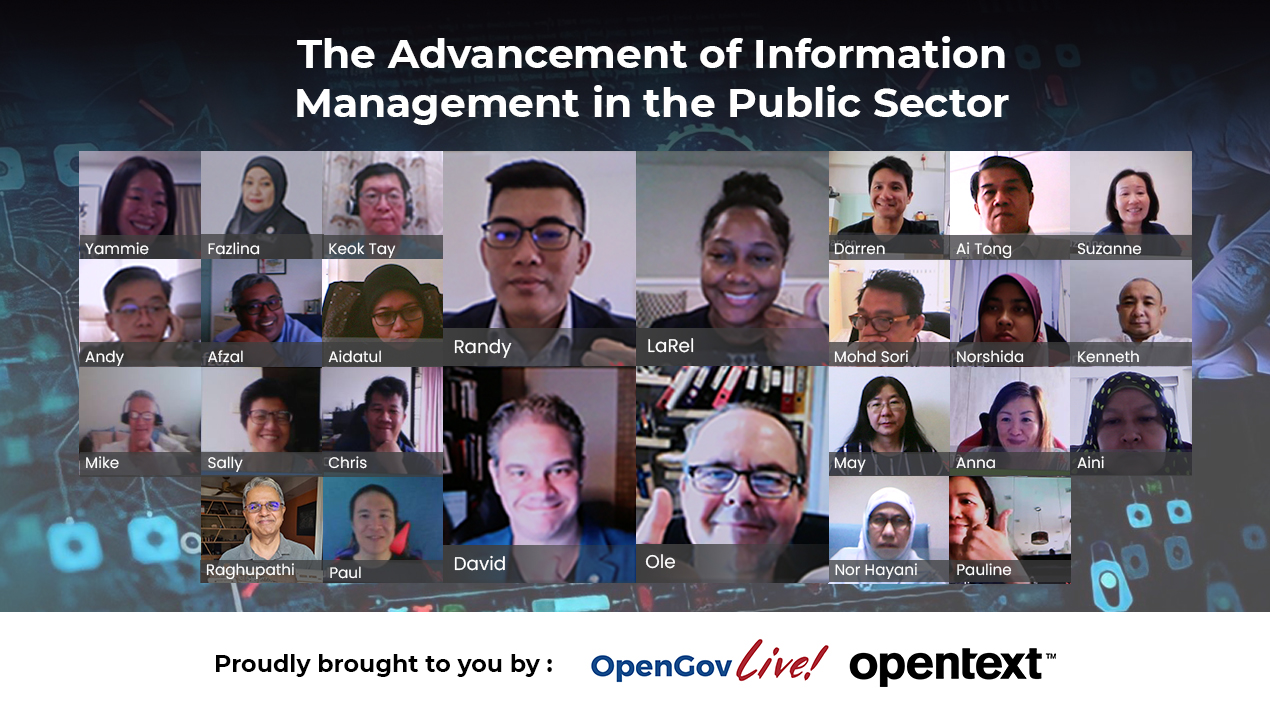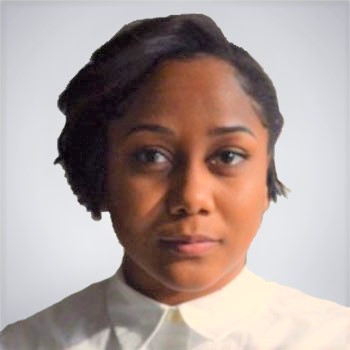
Globally, public sectors have comprehensively moved to information digitisation. This has been proven to be the fuel of the public sector today, allowing them to understand trends, make decisions and better serve citizens. With this, though, comes the tremendous responsibility of managing and protecting data – in terms of privacy as well as safekeeping. This has been done through policy, process and infrastructure.
Governments are focusing heavily on improving data quality, data governance and data compliance as well as security because of this recent surge in digital information. It is critical to upgrade or add advanced technology mechanisms for gathering, analysing and disseminating accurate information to improve citizens’ understanding of government activities.
Process and infrastructure are the other two pillars upon which a good data strategy is built. Information management enables data processing techniques in the public sector to become more secure and integrated while maintaining data quality.
Governments must improve decision-making, demonstrate accountability and openness with the right information management solutions. Properly managing public sector information, will ensure that it remains reliable, trustworthy and promotes the use and reuse of data by both public sector entities and the public.
Agencies will be able to interpret structured and unstructured data insights into actions and outcomes through mastering information management methodologies. Analytics and trends will generate information-driven, actionable insights and simultaneously speed up decision-making.
Further, the risk of data being tempered or distorted can be mitigated if the information is automated to adhere to governance and compliance protocols.
The question is: How can information management improve processes in the public sector?
Enterprise content management technologies ensure secure and instant access to information when, where and how it is needed. Obtaining this actionable result will increase decision-making speed and transparency, as well as add value to the data when it is transformed into recommendations for change.
Suitable automation and integration tools can also offer appropriate proper data management that empowers compliance as well as diminishes risk, thereby ensuring that public sector regulatory compliance- these are critical to managing information based on value.
With the right information management, the public sector will be able to gain insights from data to make better decisions for citizens’ economic and health benefits. Agencies must be quick to demonstrate information accountability and openness by retrieving citizen data knowledge captured in unstructured text.
This was the focus of OpenGovLive! Virtual Breakfast Insight held on 11 March 2022, which aimed to provide the latest information management tools to improve public sectors governance, compliance, and security at an accelerated speed. This is a closed-door, invitation-only, interactive session with top-level public sector executives from Singapore and Malaysia.
Demonstrating government accountability and transparency by accelerating information

Mohit Sagar, Group Managing Director, and Editor-in-Chief, OpenGov Asia, kicked off the session with his opening address.
Culture has shifted drastically because of Covid-19, Mohit asserts. “We have changed!”
He acknowledges that the world ramped up its deployment of digital technology when the pandemic hit but considers these “band-aid solutions ”. Now, there is a need to fundamentally relook at approaches and strategies. Another crisis will inevitably hit, Mohit feels, and, as such, it is imperative for organisations to think ahead, reimagine the needs of their employees and future-proof their organisations.
Moreover, in this increasingly digitally dependent world, expertise is vital. “How are organisations keeping talent?” Mohit asks.
He points out that with the newfound flexibility of working, a large portion of the workforce is looking for arrangements that suit their lifestyles. They are no longer interested in a 100%
in-office role. Organisations and agencies must keep up with that shift, he warns. Employee-centricity must be looked at if the private and public sectors are to tackle the massive challenge of attracting and retaining talent.
When managing a massive collection of information properly, he believes, the importance of avoiding data breaches and maintaining that security is ensured. Using the example of an F1 race car, he says that the vehicle is designed to go at the top speed and not slow down – similarly, digital transformation must continue in earnest and not decelerate. However, “the driver needs to be kept safe,” meaning that organisations need to put in measures that provide security, safety and trust for the driver and the team. This is the security around data – literally, the driver of digital transformation data.
Aware of the mounting challenges, such as legacy applications and lack of skill sets for true digital transformation, he is firmly convinced that transformation should not be done alone. He urges delegates to partner with organisations that have the expertise to facilitate digital transformation. Partners bring a wealth of expertise and experience that will make the journey far easier to manage and navigate.
Harnessing information management tools to deliver effective services

Randy Goh, Regional Vice President, Southeast Asia, OpenText introduced the delegates to OpenText and the solutions that OpenText can offer.
OpenText is a leader in the field of information management and has customers across various industries such as banking and insurance, manufacturing, healthcare, and the public sector in their EIM journey. With an arsenal of experience in industry solution-based best practices, along with experienced delivery and advisory resources, both OpenText’s global and local teams in Southeast Asia have helped customers achieve huge success in their EIM projects.
“Trust and quality are the core principles of OpenText,” Randy opens.
OpenText has been delivering trusted and quality solutions for 30 years, the go-to solution for 80% of the Fortune 1000 companies who use OpenText to manage information in their enterprise. Incredibly, OpenText has over 3 exabytes of information under their management.”
To put that into perspective, Amazon Web Services had 1.3 exabytes of consistently managed data at the end of 2019.
Add to that 60M secure IDs, 40M endpoints and 100M end-users and OpenText’s install base translates into a world-class information ecosystem, which OpenText customers can integrate into and leverage to their advantage.
Before closing, Randy emphasised that OpenText has a team of experienced and dedicated staff who will be able to help organisations work out the best way to manage information according to their needs.
He invited delegates to reach out to him and the team to explore ways they could assist on their digital journeys.
Digital modernisation for future-ready governments

LaRel Rogers, Senior Industry Marketing Strategist US Public Sector, OpenText spoke next on the challenges in the public sector and how governments can strategise to address the issues.
She asserts that the priorities of governments in the next 12 months would be in figuring out how to triple their digital services to improve citizen experiences using digital platforms and setting up a robust cybersecurity framework.
The key drivers of adoptions are the elimination of paper, support of digital transformation initiatives within the organisation, followed by the provision of digital services to citizens and provision of efficient e-government platforms.
Apart from citizen experience, the next area of priority is in data and application integration is the next trend and factor driving the adoption of content management, LaRel posits.
Referring to Mohit’s point about the changing DNA of culture, LaRel asserts that the culture is changing in governments – there are new norms that digital governments must consider in their workflow and processes.
Citing global government case studies, LaRel shared that an Open Government programme has helped the Canadian government analyse public opinion with AI-powered Voice of the Customer from OpenText Magellan. In Madrid, the OpenText Cloud platform has helped to improve performance and citizen engagement on the City of Madrid’s award-winning web properties.
Conversations on strategies of information management
Moving to the next segment, Mohit had an in-depth conversation with David Graham, Chief Innovation Officer, City of Carlsbad, CA and Ole Nielsen, Director, Enterprise Digital Delivery, Geoscience Australia.
Wanting to set the context and establish a fundamental understanding of the discussion at hand, Mohit begins by asking both speakers, “What is information management for your organisation?”
 For Ole, information management is about ensuring that users need a seamless experience getting to data.
For Ole, information management is about ensuring that users need a seamless experience getting to data.
David points out that there is the technical aspect of being able to bring data together and make it accessible and integrated so that people can use it. For him, it is about the usability of data and the training of users. He adds that people need to understand their role in the collection and distribution of data – everyone in the organisation has a touchpoint to data.
Circling back to the issue of talent and employee management, Ole and David share their strategies for retaining people and talent.
It comes down to trust in the employees, feels Ole. It is important to have a truly agile mindset in a rapidly changing world. Valuing people and helping people understand their value to the organisation are important principles in retaining talent.
“How do employees see that their own personal goals and experiences connect with the organisation?” David asks.
It boils down to the mission and letting people know why they are there and why they are important. People must feel valuable the moment they step into the organisation – they want to feel that they have an impact and can continue to gain value.
On the topic of remote work and the strategies, Mohit was keen to know what the speakers thought about ways to keep employees going – motivated, productive, and engaged.
Ole believes that people are motivated by working from home. When given trust, autonomy and flexibility, people are encouraged to stay. It becomes even more fruitful when employees can find their role and purpose amid that.
He is convinced that people are attracted to organisations where they know they can gain skills that will make them more employable. The natural cycle of that is that people will not stay for long after they have acquired the vital skills.
“Losing people is a good thing, “Ole points out because it means that the organisation is offering value to employees.
Remote work is here to stay, David asserts and concurs with Ole’s point about the importance of training people. It means that the focus must shift towards creating high impact in-person engagements. “How are organisations intentional about in-person engagements and meetings?

David strongly feels that those who are doing remote work long-term feel that the organisation values them.
Remote work also saves time that can be channelled into achieving a work-life balance, Ole highlighted. “Trade the morning commute for an afternoon cycle!”
Steering the conversation to the topic of security, Mohit inquires what the speakers think about security in the age of remote work. “How can organisations ensure that their data is compliant, accurate, and secure?”
Ole has observed a shift towards a collective responsibility for security. Using firewall as an example, he explains that, in the past, people built a firewall around the organisation; now, firewalls are around every single application. Automation from cloud technology is enabling that.
For David, remote work is an impetus for data quality and management and ensuring that those systems are in place. It is crucial to build good cyber hygiene and help people understand what their role lies in data management. In fact, remote work makes it easier to track, understand, secure and move data.
Ole concurs that data management is easier when it is better remote – people are working on the same documents on cloud, for instance.
David adds that there is a different nature to these virtual platforms that creates an immediacy to the access and connection with people.
On that note, some delegates pointed out that remote work has also resulted in burnout, difficulties in securing endpoints and managing user behaviour – all of which compromises security.
In response, Ole opines points out that burnout often results – not from remote work itself- but trust. On compromised security and phishing, he notes that production systems and data should not sit on the same network as emails.
Interactive Discussion
After the informative sharing, delegates participated in interactive discussions facilitated by polling questions. This session is designed to provide live-audience interaction, promote engagement, hear real-life experiences, and impart professional learning and development for the participants. It is an opportunity for delegates to gain insight from subject matter experts, share their stories and take back strategies that can be implemented in their organisations.
The first poll asked what delegates felt is the key business initiative for the next 12-18 months. The majority (42%) felt that improving employee productivity through digital technology was the key focus of their organisation. Other delegates were equally split between improving agility and delivery through Cloud Migration (21%) and enabling real-time performance visibility and analysis (21%). The rest of the delegates are focused on embedding compliance transparently in applications (11%) other priorities (5%).
Returning to the conversation about productivity in remote work, a delegate pointed out that there is an issue of parity that arises because there are employees who might find it unfair that they are not able to work from home. He added that there is a challenge to data privacy. Using the issue of information in Trace Together being used and shared among government agencies for various purposes outside of contact tracing, he flags out the important ethical considerations of data sharing.
To the point about parity, Ole pointed out that the other side is also true – one can be unproductive in the office and that it is also unfair if people can only work remotely. Concerning privacy, the notes that it is important for people to also recognise that the government sharing data is not the same as publicising it.
David reiterates the concept of trust – what are organisations doing to build trust in data management and employees? It is vital to focus on it as a core value in everything that organisations do. Focusing on a culture that deals with trust and risk assessment are foundational, David believes.
On that note, Mohit highlights that culture has shifted but while people are now able and capable to work from home, some mindsets have not changed.
On the most important IT priority for delegates, almost half (46%) prioritise better innovation and agility through digital maturity. The remaining delegates were evenly divided between improving efficiencies and reducing maintenance costs (27%) and building a more resilient infrastructure and business (27%).
A delegate pointed out that inefficiencies are a priority because IT inefficiency adds up over time and makes it difficult to implement new things. To that end, working with partners is beneficial because partners have workflows and systems that have been optimised.
Another delegate opines that innovation is the key focus. “We should focus on fixing tomorrow’s problems rather than yesterday’s problems,” he claims.
Mohit posits the importance of rethinking how to do business and finding new ways of delivering services of capability.
On the challenges organisations face in managing change-related data/business requirements, most delegates (36%) faced challenges in employee skillsets. Others face issues of reluctance to consider or adopt new technologies (29%) and the lack of flexibility/agility in current systems (21%). The remaining delegates went evenly with challenges of time involved to make changes (7%) and the uncertainty around future needs (7%).
In response to the polling results, a delegate opines that on the data transformation journey, people need to learn how to use and make sense of data on the data transformation journey. Another participant concurred with the view that building the capability of employees is key. While technology is a great tool, it is the people who can write business cases and build processes that will determine how businesses operate.
In the final poll for the day, delegates were asked about their biggest challenge when it comes to information management. Well over half (60%) of the delegates found the information context – knowing why they have it, where to use it and how it should be managed – the biggest task at hand. A fifth (20%) found the ability to analyse data in real-time concerning while 13% felt data security and loss prevention to be the main issue. Regulatory compliance was seen as concerning by 7%.
Some delegates expressed the view that understanding information context is the foundation of information management. On that note, David adds that it is vital for organisations to ask themselves what challenges they face before delving into the technologies that they should be negotiating with.
Closing
In closing, Randy Goh, Regional Vice President, Southeast Asia, OpenText acknowledged the importance of trust on the journey of digital transformation. He emphasised that information management is a key strategy that can alleviate the mounting pressures governments face in keeping up with citizen demands.
Having accumulated decades of experience, he is confident that OpenText is well-poised to help agencies undertake the challenging task of helping organisations build trust.
Before ending the session, Randy thanked the delegates for the highly illuminating sharing and invited delegates to reach out to him and the team if they wanted to understand how they could get started on this journey with OpenText.
















